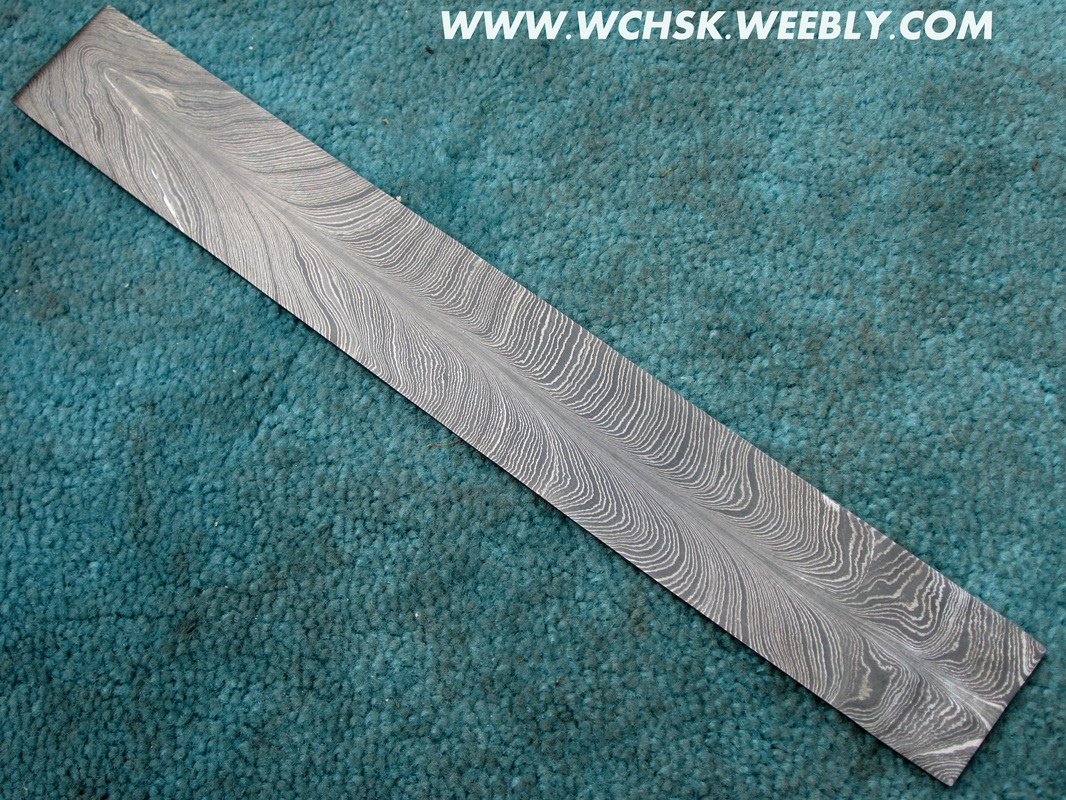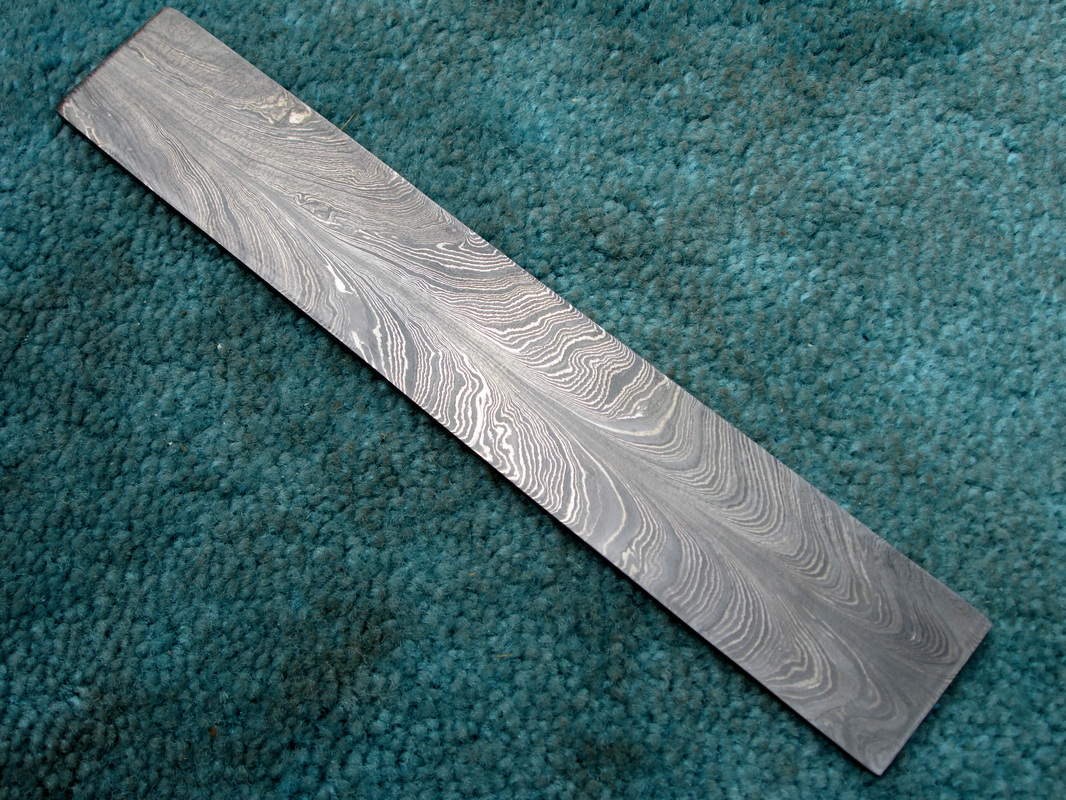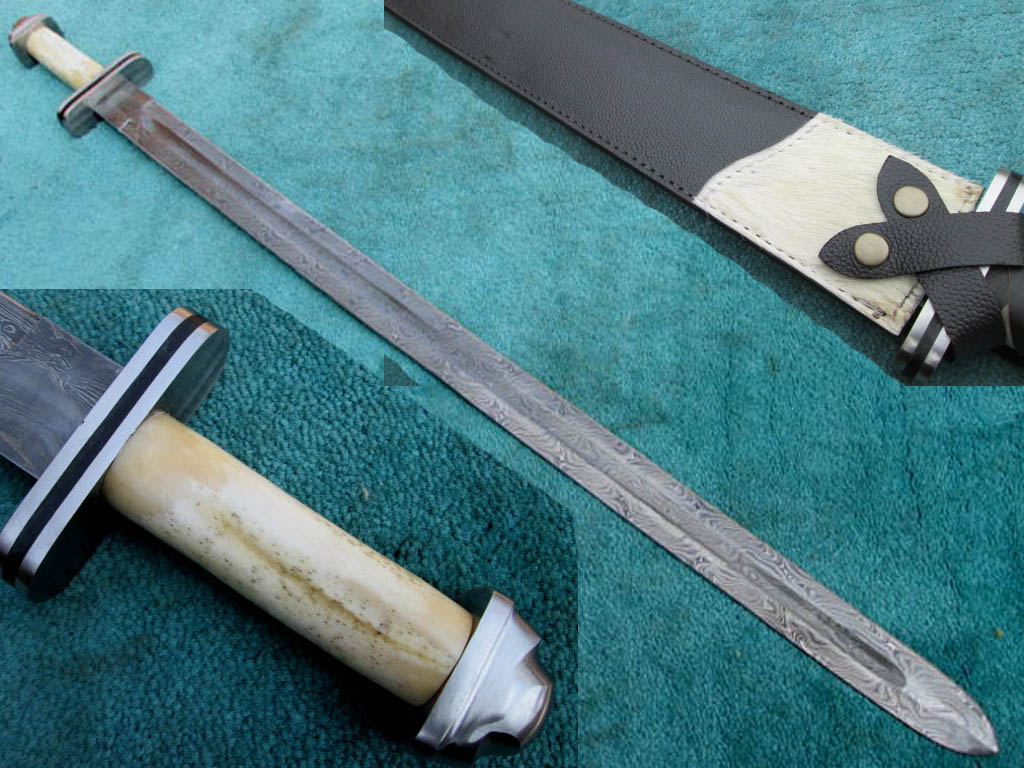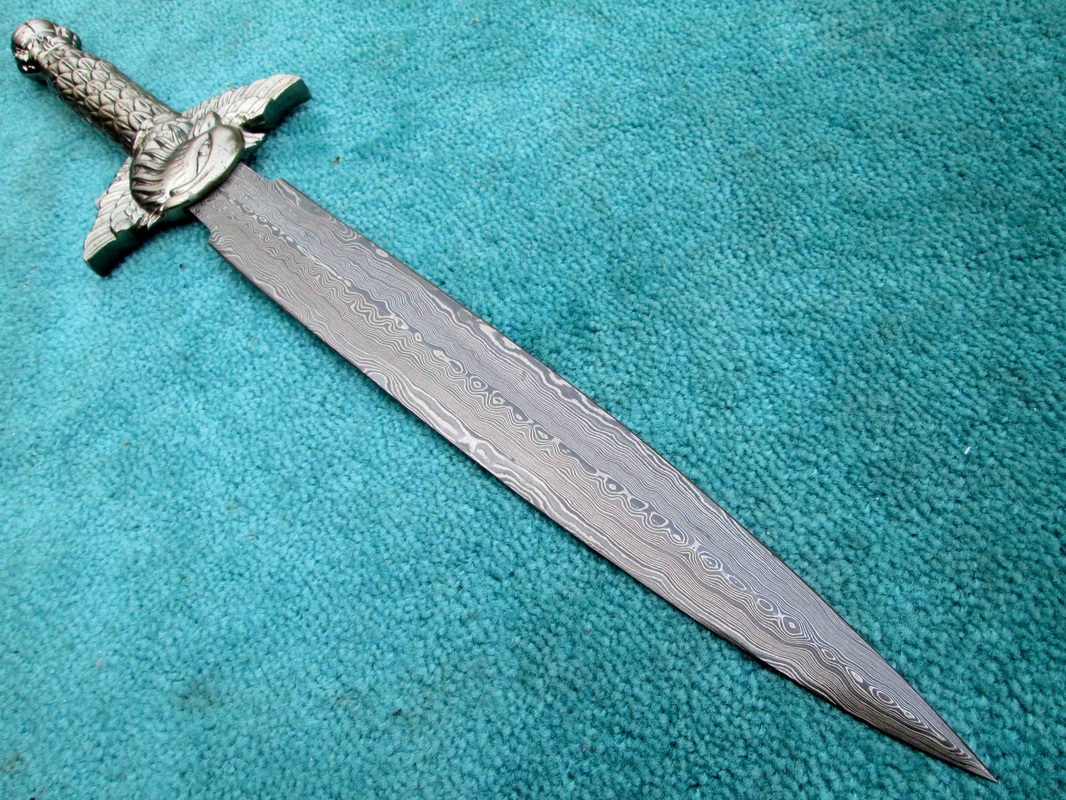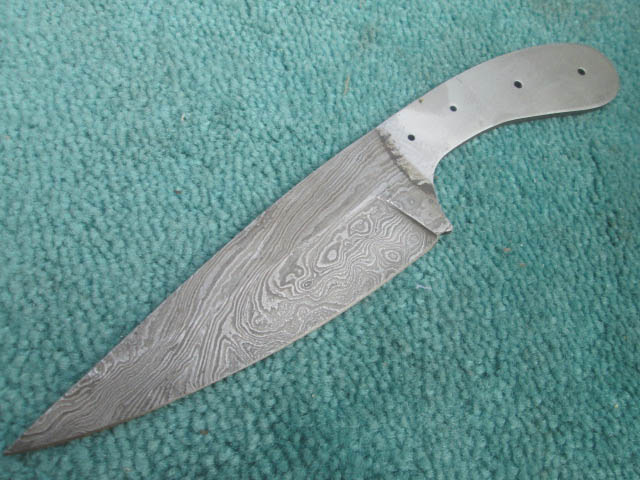Competition from Offshore / 3rd World
 |
| "One-of-a-Kind 14" Custom Handmade Damascus Steel Bowie Hunting Knife" Selling price $125 CDN Coldlands Knives - via Amazon |
I've had a web site since about 1994. It is a large site, so both because of longevity and content = external linkages, and a published e-mail address, I get a huge amount of even business related spam.
About two weeks ago, I got sent an (unrequested) e-mail along with a (huge x 39) pile of images, detailing products available from a company in India :
We would like to introduce ourselves as manufacturers and exporters of all kinds of handmade Damascus Steel & Stainless Steel knives. ... We offer competitive prices and quickest worldwide delivery. We also invite you to visit our website and see our wide range of knives. We can also provide you any kind of knives in any materials you demand. You are also welcome to send us sketch or photo of your design for make. Quantity does not matter. ...
Salahuddin World Class Hunting & Sporting Knives Company.
Pak Town Wazirabad 52000 ,District Gujranwala Pakistan.
www.wchsk.weebly.com
 |
| both images from - Salahuddin World Class Hunting & Sporting Knives Company. |
So - Primarily as an exercise, I took the trouble to look over the company web site.
- Generally, I found the overall quality of the offerings quite good. Finishing certainly looks excellent.
- The layer counts seen are nicely balanced to yield dramatic patterns - 'medium' density / layer counts.
- They obviously have a bundle of standardized forging methods, but at the same time, there is evidence of individual production (pattern variation) on each. (Digging through the web site does show use of what looks like a fairly small mechanical hammer. Use of simple hand grinding.)
- They obviously have a set of standardized blade profiles. These are then expanded by applying a fairly wide range of hilting materials and details.
Now - We all need to be aware that there are families in India and Pakistan who have been making extremely high quality cutting edges of all kinds - in some cases for * centuries *. This has included an * unbroken * tradition of working with layered steels. (And do remember - where does Wootz come from originally!)
Quality has never been an issue here - those craftspeople can certainly produce good work.
Blade * shapes * certainly have been a problem in the past.
I had seen some of the first lots of 'India made' blade blanks, a table full offered at the SCA's Pennsic War event, some point about 1978 / 79. These were still a bit rough in technique, and out of about 100 samples, I only found three that I thought were close to actual European historic patterns.
But face it - People are People, folks in India are at core as smart as any place else. India as a nation has certainly jump started into the Information Age way, way faster than 'the West'. At least in terms of progression from ox carts to internet within a single generation.
So I was curious. Outside of that huge e-mail, Salahuddin had been polite and business like. I had a number of direct questions about the product and the ordering mechanics, so I wrote back:
1) Prices
2) Minimum Order amounts
3) Shipping Costs
4) Alloy content / layer counts
Yes we can also supply blank blades and blank billets as per your requirements ( sizes ,patterns ,) .1 ) Regarding the prices ,may we ask is that possible to send us art number from our website of the knife or blank blade in which you are interested ? So we can quote you prices accordingly .It would be highly appreciated .Would you please ? You are also welcome to send us your own design for price and make .2 ) You can order in any quantity ,there is no minimum quantity .3) The shipping charges depend on the weight of your package ,because we pay by weight to DHL courier company and we always charge shipping charges after weight the package .Because our consistency not allow to charge extra shipping amount to our valuable client .We hope you can understand .However we would like to tell you that we have very low shipping charges for Canada especially on big order packages. (*)
Our Damascus steel is forged out of the steel sheets of grade AISI 1075 and AISI 4340. AISI 1075 is a high carbon steel that contains around 0.75% carbon. It is widely used to produce various types of springs and cutting tools. AISI 4340 is a low carbon and high nickel steel alloy. It contains 1.65% – 2% Nickel, 0.7% - 0.9% Chromium and 0.3% to 0.4% Carbon.
Number of Layers, Initially a stack of 11 sheets of AISI 1075 & AISI 4340 is formed. The stack is then heated and hammer forged. The heating and beating process is repeated 4 to 5 times to get over 176 layers of high quality Damascus steel.
Heat Treatment, Each blade is carefully heated to 1560 degree Fahrenheit, where after; it is oil quenched and tempered to achieve hardness above 56 on rock well scale.I did dig through the offerings on the web site, and reply with some specific items. I had asked about specific sizes and prices. In some cases I had asked if it would be possible to purchase just the blade blanks (not finished as illustrated).
The prices are obviously US funds (converted in brackets into CDN funds)
For reference, I have pulled the object images off their web site.
Following are the info & price of the bars you requested .
HK 330 ,OVERALL : 12 INCHWIDTH : 2 INCHTHICKNESS : 4MMPATTERN : FeatherPRICE : $28.00 ($36 *)HK 331 :OVERALL : 8 INCHWIDTH : 1.5 INCHTHICKNESS : 4MMPATTERN : FeatherPRICE : $21.00 ($27 *)HK 332:OVERALL : 8 INCHWIDTH : 1.5 INCHTHICKNESS : 4MMPATTERN : TwistPRICE : $18.00 ($23 *)You are welcome to send us your own required size for price and make.Sword price and size are following ,HK 269-2 :OVERALL : 30 INCHBLADE : 24 INCHPRICE : $90.00 ($113 *)HK-143 :OVERALL : 15 INCHBLADE : 10 INCHPRICE : $40.00 ($51 *)Leather Sheaths Included in prices .Yes we sell without hilts .Also we can supply you any bars,billets in any size you demand .
HK-244 Blank blades sizes are following :OVERALL : 9.5INCHBLADE : 5 INCHPRICE : $22.00 ($28 *)
Back up to yesterday's commentary:
First - Commercial Sales
Take a look at the offering from Coldlands Knives at $125 (plus tax, shipping)
Compare it to the (larger) blade HK-143 at $51 CDN *.
I did check to see if that blade is one of the standard offerings from Salahuddin:
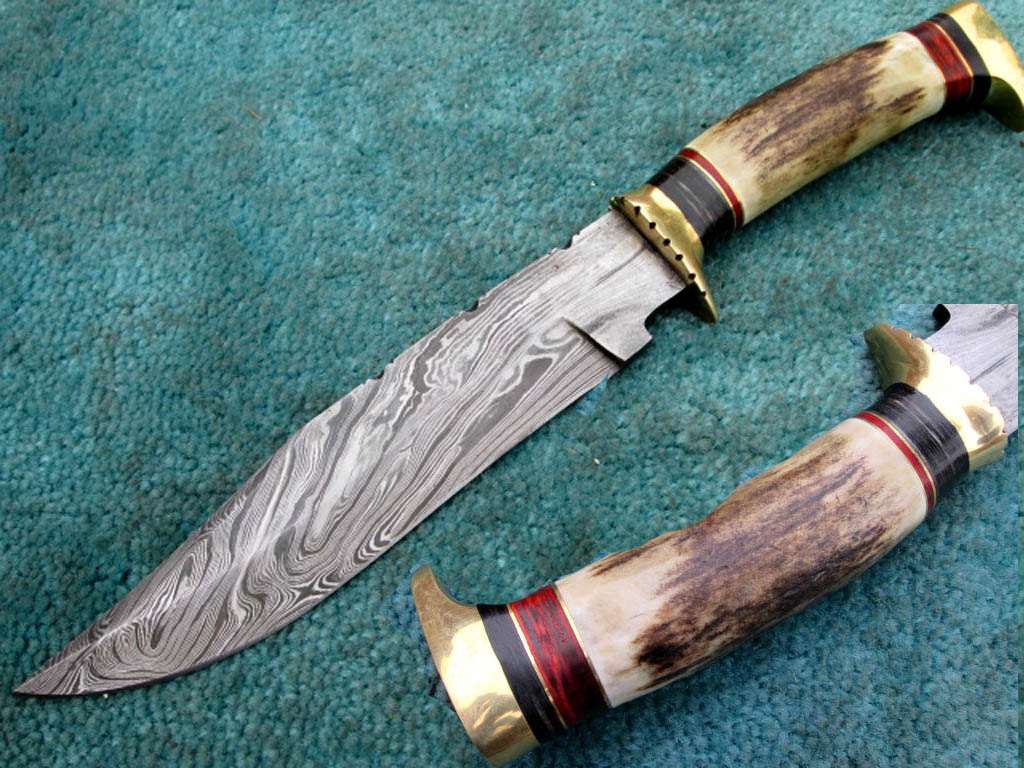 |
| Salahuddin HK-300 |
Second - Billets.
These could be considered roughly equivalent to at least the layer count on my circa 1990's work (Note that I normally use a more complex alloy assortment, and with pattern welding usually use three or more rods).
Takes me two days / against roughly $ 25 - 35 *.
Third - Blade Blanks.
Similar to my own one piece 'heavy kitchen knives', HK-244 shown as comparison. I As a finished one piece design, I would charge for 9 inches x $40. (Again, I normally include an extra step of complexity - welding in the carbon core).
Takes me roughly 5 days / against roughly $30.
So, here is the thing
(Those intending to become full time bladesmiths take special note.)
Go back and read part one.
Run the numbers.
This is not intended in any way a criticism of Salahuddin.
They are producing good quality objects, making use skilled workers. They have miserable safety standards, microscopic wages (compared to Canada) and no comparison in operational costs. They are brilliantly using the internet to massive advantage for both research and sales.
But we just can NOT compete with these folks - if PRICE is the only comparison being made by North American consumers.
* One important caution : Prices here are NOT including the shipping cost. Possible entry duties (??)
DHL uses an overly complex 'contact for estimate' system.
Canada Post (Ontario to India) used for reference, suggests adding roughly $20 for a single / double item sized package (slow air + tracking).


